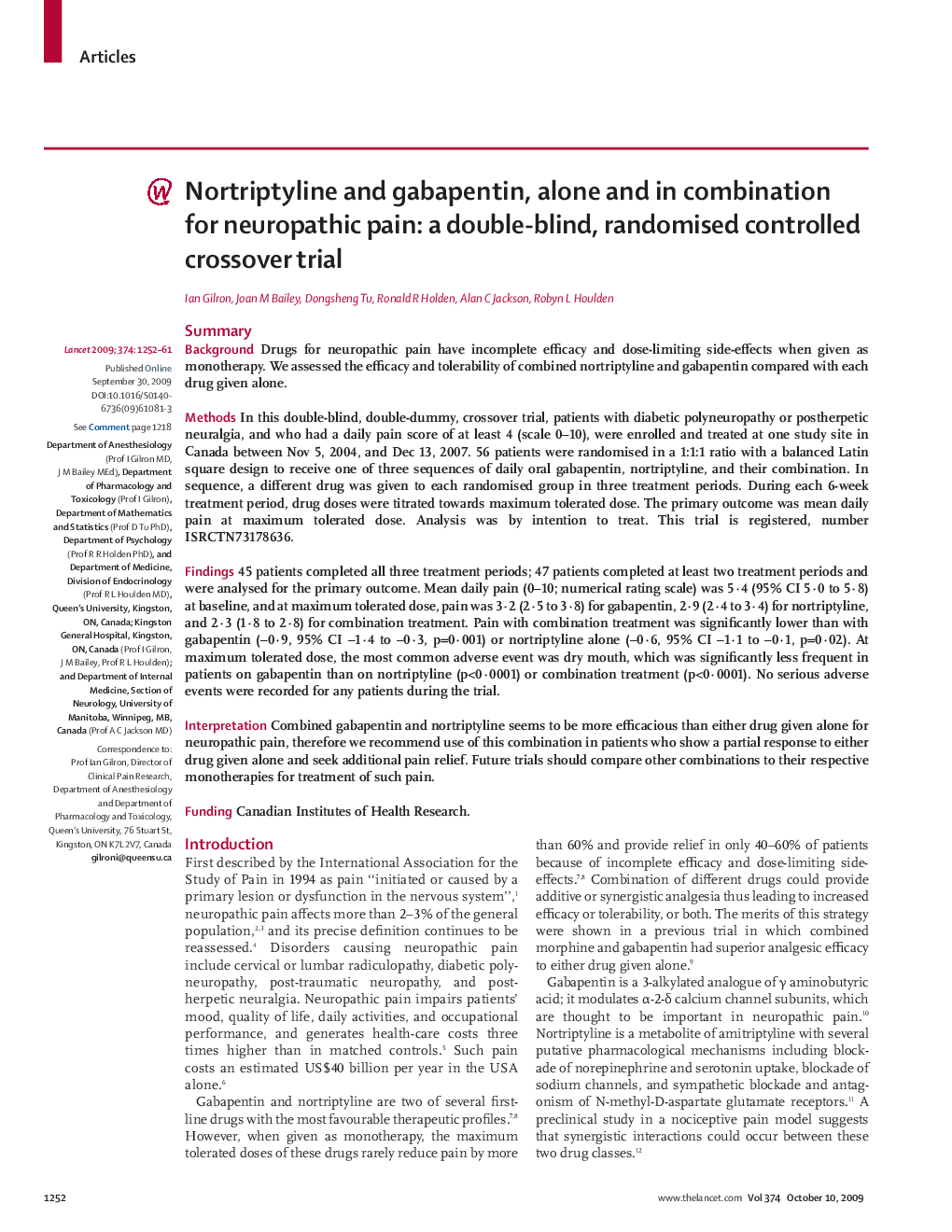| Article ID | Journal | Published Year | Pages | File Type |
|---|---|---|---|---|
| 3495413 | The Lancet | 2009 | 10 Pages |
SummaryBackgroundDrugs for neuropathic pain have incomplete efficacy and dose-limiting side-effects when given as monotherapy. We assessed the efficacy and tolerability of combined nortriptyline and gabapentin compared with each drug given alone.MethodsIn this double-blind, double-dummy, crossover trial, patients with diabetic polyneuropathy or postherpetic neuralgia, and who had a daily pain score of at least 4 (scale 0–10), were enrolled and treated at one study site in Canada between Nov 5, 2004, and Dec 13, 2007. 56 patients were randomised in a 1:1:1 ratio with a balanced Latin square design to receive one of three sequences of daily oral gabapentin, nortriptyline, and their combination. In sequence, a different drug was given to each randomised group in three treatment periods. During each 6-week treatment period, drug doses were titrated towards maximum tolerated dose. The primary outcome was mean daily pain at maximum tolerated dose. Analysis was by intention to treat. This trial is registered, number ISRCTN73178636.Findings45 patients completed all three treatment periods; 47 patients completed at least two treatment periods and were analysed for the primary outcome. Mean daily pain (0–10; numerical rating scale) was 5·4 (95% CI 5·0 to 5·8) at baseline, and at maximum tolerated dose, pain was 3·2 (2·5 to 3·8) for gabapentin, 2·9 (2·4 to 3·4) for nortriptyline, and 2·3 (1·8 to 2·8) for combination treatment. Pain with combination treatment was significantly lower than with gabapentin (−0·9, 95% CI −1·4 to −0·3, p=0·001) or nortriptyline alone (−0·6, 95% CI −1·1 to −0·1, p=0·02). At maximum tolerated dose, the most common adverse event was dry mouth, which was significantly less frequent in patients on gabapentin than on nortriptyline (p<0·0001) or combination treatment (p<0·0001). No serious adverse events were recorded for any patients during the trial.InterpretationCombined gabapentin and nortriptyline seems to be more efficacious than either drug given alone for neuropathic pain, therefore we recommend use of this combination in patients who show a partial response to either drug given alone and seek additional pain relief. Future trials should compare other combinations to their respective monotherapies for treatment of such pain.FundingCanadian Institutes of Health Research.
